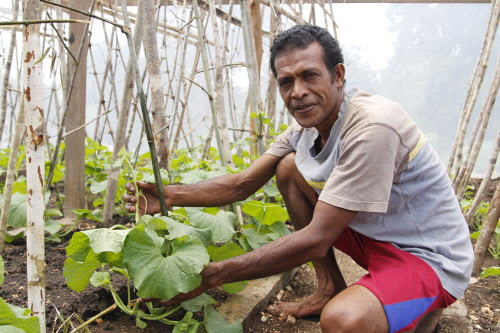In the dark still about how much Australia will help the world’s most vulnerable
Monday, December 17, 2018

A pre-Christmas Government budget update has failed to shed light on Australia’s true commitment to helping vulnerable communities at risk of poverty, food insecurity, displacement, war and climate change.
The Mid Year Economic and Fiscal Outlook report released today lacked clarity about whether the step-up of aid in the Pacific - through the funding of infrastructure loans - would come at the expense of existing programs.
World Vision chief executive officer Claire Rogers said continued uncertainty about how Australia would support vulnerable communities in great need was surprising, given the Government was on track for a Budget surplus next year.
“The Government has said in the past that it was unable to increase its commitment to aid until the Budget was returned so surplus. We hear today that this is imminent – so there can be no more excuses for continue stinginess. Australia is better than that.”
She said Australia’s severely depleted aid budget was at its lowest level in the country’s history and called both major parties to commit to increasing Australia’s aid budget 10 per cent annually for six years.
“Australia has dropped to astonishing depths in how much it helps people in the world. This call for 10 percent more for six years would do nothing more than bring it into line with other prosperous countries, such as the United Kingdom.”
The MYEFO detailed the Federal Government’s plans to step up its attention in the Pacific, offering loans for infrastructure. However, Ms Rogers said it was disappointing if $500 million of the $2 billion would be shifted from other life-saving aid projects such as education and health.
She said the commitment to provide loans for infrastructure in the Pacific should also accompany programs which broadened benefits of that infrastructure and lifted communities out of poverty.
“The very poorest countries, which need our help the most, are most vulnerable to various shocks and are least able to repay debts,” Ms Rogers said.
“And there’s no point providing loans for such things as hospitals and roads if there are no medical staff to work in the hospitals and if families can’t afford to buy vehicles to drive on the new roads.”
“How this money is directed should be pro-poor, climate resilient and bundled with other community development projects to maximise impact.
“The economies of most of Australia’s key development partners in the region are fragile, so the Government should support their development through grant-based aid rather than burdening them with more debt,” Ms Rogers said.
For more information, contact:
Ruth Lamperd (News Editor), 0417 765 947, ruth.lamperd@worldvision.com.au
PICTURE: Julio in Timor Leste benefits from World Vision Australian programs supporting farmers to grow nutritional food.
Media Releases,
Asia and the Pacific,
Budget Cuts,
Claire Rogers,
Foreign Aid
Back to all Results